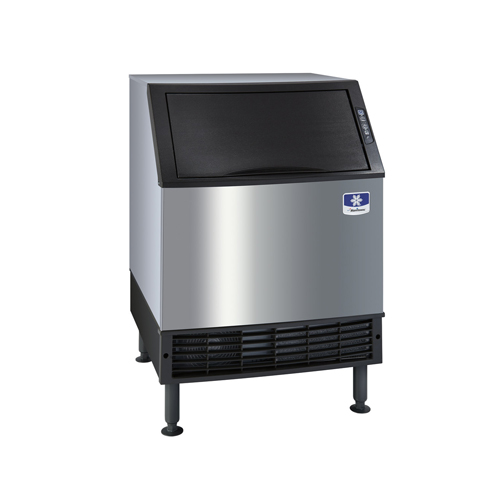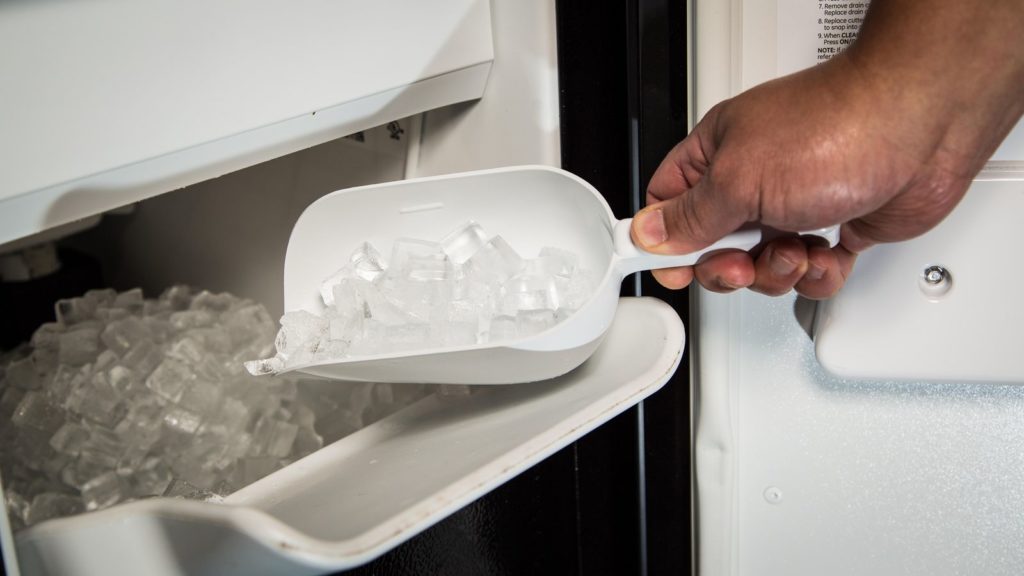16 Oct, 2018
Commercial Ice Machine Maintenance
Ice is used in almost every foodservice setting, from restaurants, bars, cafeterias, and coffee shops, to nursing homes, hospitals, and healthcare facilities. Since ice is such an important part of food service, it’s important for professionals to know how to clean an ice machine. In fact, these machines are often some of the dirtiest pieces of equipment in the kitchen. While every ice machine has its own special maintenance requirements, most follow a basic overall process. This article will take you through a detailed, step-by-step explanation of the ice machine cleaning process.
How Often Should Your Machine(s) Be Cleaned
If you make your own ice, your machine must be properly maintained and sanitary, and your water source must be safe. The Federal Food Code is the standard. Chapter 1 part 1-201.10 defines ice as food. This subjects ice to the same handling and cleanliness standards as everything else including manufacturing equipment. Ice itself falls under 40CFR141 governing drinking water purity. Ice machine cleaning is governed by Food Law 2009 Chapter 4 part 602.11 section (E) item (4a and b) which states that the machines must be “at a frequency specified by the manufacturer” – e.g. Manitowoc (which ranges from 2 – 4 times per year) or “at a frequency necessary to preclude accumulation of soil or mold,” (which realistically should be at LEAST every 6 months). Ice machine sanitizing is governed by Chapter 4 part 702.11 which states that their surfaces must be sanitized after each cleaning. Annex 7 Form 2A, section 5 states: Federal law provides under the Criminal Fine Enforcement Act of 1984 for a fine up to $100,000 for a misdemeanor by a corporation or individual not resulting in death and, for misdemeanors resulting in death, a fine of up to $250,000 for individuals and $500,000 for corporations. The U.S. Centers for Disease Control and Prevention (CDC) also recommends that users of commercial ice-making machines follow the manufacturer’s recommendations for cleaning and sanitizing the machines.

Replace Water filter every six months
Water filters are extremely important to extending the life of your machine and should be replaced every six months. A water filter performs three tasks:
- Removes sediment from the water, keeping ice clean and clear in appearance
- Inhibits scale, which can build up in the machine over time and drastically reduce ice production
- Removes odor and bad taste, keeping customers happy
Although the filter may not appear to be blocked with sediment after six months, the scale inhibitor and carbon elements (which prevent odor and bad taste) are usually depleted and no longer effective.
To clean the interior:
- Mix a solution of water and descaler together following the recommendations from the bottle (Usually 5-6 ounces per gallon).
- Use a spray bottle to apply this cleaner to the inside of the bin. Remove the baffle from the inside of the bin by removing the thumbscrews first.
- Using a nylon brush, scrub the interior in its entirety as well as the baffle.
- Soak your scoop until all of the scale deposits are removed.
- Flush the bin, baffle and scoop thoroughly with fresh water ensuring all traces of the descaler has been removed.
Sanitize your machine regularly
By regularly changing the water filter and using antimicrobial protection, you are on the right path to keeping your ice machine in good working condition for longer, but there is still no substitute for regular cleaning.
Your ice machine should be emptied and thoroughly sanitized every six months. Clean the machine using a nickel-safe scale remover and an ice machine sanitizer. Some companies sell automatic cleaning systems that can be set to sanitize your ice maker every two, four or twelve weeks.
Additionally, condenser fins or air filters should be cleaned or replaced every six months. Failure to keep the condenser free from lint and grease build-up will decrease the machine’s ability to breathe and operate at peak capacity, thus reducing the ice production.
By taking the time every six months to clean your machine and change filters and antimicrobial devices, you can greatly increase the life of your machine and drastically decrease the cost of owning an ice machine over time.

How to clean portable ice machine
The majority of portable ice machines can produce a full tray of ice cubes in 12 minutes or less. Even more impressive, these ice machines can produce anywhere from 28 to 35 pounds of ice over a 24 hour period. Additionally, portable ice makers can save you a lot of money on store-bought ice. They’ll also save you time and gas money as you’ll no longer have to run out in the middle of a party to buy more. Portable ice machines also provide an astounding amount of customization options. With the different shapes, sizes and colors of units available, chances are good you can find one that fits your style. Portable ice makers also give you the option of picking the size and shape of the ice cubes they produce. And true to their name, portable ice makers are compact enough to fit on almost any kitchen counter or shelf, and are great on the go for events outside the home or office.
Portable ice makers are also quite simple to operate and maintain. Simply plug the unit in and fill the water reservoir and you’re ready to start making high quality ice. Best of all, these ice machines are easy to clean. In fact, cleaning your ice maker is the only piece of regular maintenance you need to do to ensure your portable ice maker continues running efficiently for as long as possible. By simply cleaning your unit periodically, you can ensure you’re getting the best tasting ice possible all the time.
Below is a simple process to clean your machine:
1. Empty and unplug. Remove any ice that may be left in your ice machine and unplug it from the wall. It’s important that the unit is empty before starting the cleaning process. Obviously, unplugging the unit from the wall will help keep any safety issues at bay.
2. Remove the ice tray. Pull the portable
ice maker’s ice tray out from the inside and put it off to the side. For most units, you should be able to just unhook it and remove the tray. Put the tray on a clean surface off to the side. We’ll return to it in a few minutes.
3. Wipe it down. Wipe off the interior of the unit using a soft cloth. Make sure to hit all the walls, as this is a target area for build up among many different ice machines. If your ice maker is especially dirty, put two tablespoons of vinegar on the cloth to help further clean any impurities and buildup that has worked its way into your icemaker. This can also help to remove excess calcium build-up caused by running hard water through the machine.
4. Clean the tray. See, you knew we’d come back to the ice tray. Wipe down the tray in the same manner as the interior of the portable ice maker. Be sure to scrub it well to ensure any build up is removed. As with the interior, you’re welcome to use a small bit of vinegar to ensure proper cleaning.
5. Rebuild it. Rebuilding might be a bit of an overstatement, but at this point you should simply replace the ice tray within the ice machine. Then, plug the unit back into the wall.
6. Run a cleaning cycle. Run the portable ice maker for a couple of cycles with a small amount of vinegar. Just a capful will do – you can also use a mixture of lemon juice and water if you used up all your vinegar earlier. This will ensure that any and all calcium build up and impurities are removed completely from the ice machine. On a side note – this is a great tip if you have a new unit. Running a cleaning cycle like this can help to remove any plastic taste leftover from the manufacturing process in brand new machines.
7. Run a normal cycle. Empty all the water from the portable ice maker’s reservoir and run a cycle or two with clean, warm water. This will ensure that any leftover vinegar or impurities have been completely removed from the machine. This can also help remove that plastic taste you might find in newer units, just like the vinegar trick above.
8. Clean the exterior. Using a soft cloth, wipe down the exterior of the machine. Use some warm water if available, and scrub any dirt or dust that might have latched on to the portable ice maker. This will give your ice machine a clean and healthy look.
